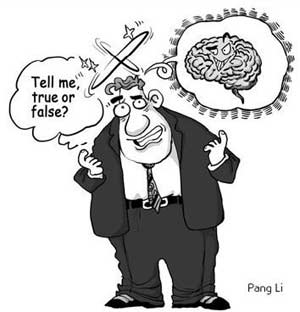
(China Daily Photo)
False beliefs are everywhere. Eighteen percent of Americans think the sun revolves around the earth, one poll has found. This effort to dispel misinformation may be more difficult than it seems, thanks to the quirky way in which our brains store memories – and mislead us along the way.
The brain does not simply gather and stockpile information as a computer's hard drive does. Facts are stored first in the hippocampus, a structure deep in the brain about the size and shape of a fat man's curled pinkie finger. But the information does not rest there.
Every time we recall it, our brain writes it down again, and during this restorage, it is also reprocessed. In time, the fact is gradually transferred to the cerebral cortex and is separated from the context in which it was originally learned. For example, you know that the capital of California is Sacramento, but you probably don't remember how you learned it.
This phenomenon, known as source amnesia, can also lead people to forget whether a statement is true. Even when a lie is presented with a disclaimer, people often later remember it as true.
With time, this misremembering only gets worse. A false statement from a noncredible source that is at first not believed can gain credibility during the months it takes to reprocess memories from short-term hippocampal storage to longer-term cortical storage.
As the source is forgotten, the message and its implications gain strength.
Even if they do not understand the neuroscience behind source amnesia, campaign strategists can exploit it to spread misinformation. They know that if their message is initially memorable, its impression will persist long after it is debunked.